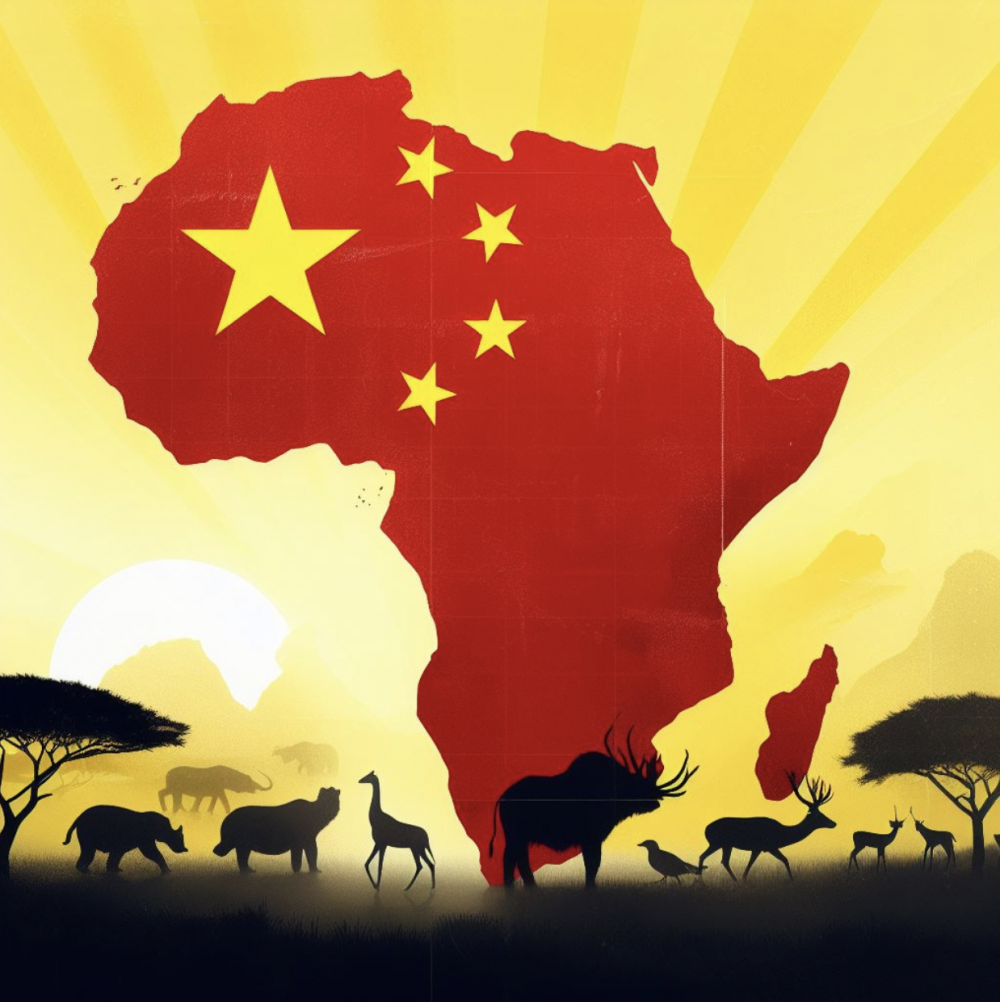
SAHIL JAISWAL – NOVEMBER 16TH, 2023
EDITOR: COLE YAP
Introduction:
From 1.2 Trillion in 2000 to 17.7 Trillion in 2021, China multiplied its GDP by a factor of 15 in 20 years, and in the process, has taken the lead as the fastest-growing major economy in the world. Once a barely fledgling state, China has snowballed itself into a juggernaut, so naturally, when the burgeoning nation flexes its muscles, the world shifts instinctively in response. As a matter of fact, emblematic of its economic power, according to The Brookings Institution in 2014, despite only accounting for 5% of China’s global trade, China surpassed the United States as Africa’s largest trading partner in 2009. As the century progresses, China is distinctly projecting its economic power beyond its borders, especially in Africa – giving rise to complex development projects like the prominent Belt and Road Initiative (BRI).
At first glance, the BRI appears to be a cross between a long-term profit-generation venture and a charitable endeavor, but in reality, the project has deep roots in Chinese military doctrine. This article aims to delve deep into the why of the initiative, touching first on established Chinese philosophies on defense, moving into how the initiative fits into place, before finally examining the impacts of all of the above.
Existing Policy:
To understand this ripple effect, from military to money, it is critical to understand the evolution and current state of Chinese doctrine. Historically, China’s defense policy has been shaped by a blend of philosophical foundations – dating back as far as Sun Tzu – and their interpretation by key, concurrent leaders. From its early days as a confederation of warring states to the more recent “Century of Humiliation,” China’s strategy has always loosely taken on the same themes: safeguarding territorial integrity and defensive posturing. The inception of the People’s Republic in 1949 ushered in a more structured defense doctrine, significantly influenced by Mao Zedong’s teachings. It was Mao who posited the principle coined “active defense,” a doctrine that has endured, to date, as a cornerstone of Chinese military strategy, as described by MIT Professor M. Taylor Fravel in his book of the same name.
“Active defense” encapsulates a strategically defensive but operationally offensive stance. The doctrine prescribes a patient, long-term defensive strategy, but once engaged, it emphasizes capturing an advantage through thoroughly pre-formulated and proactive measures. These pre-formulated measures manifest themselves in a broad spectrum of operations. On one hand, it addresses conventional threats, guiding China to posture in regional flashpoints like the South China Sea. On the other, it’s evolved to encompass non-traditional realms, including cyber, space, and information warfare. Its cyber operations, in particular, serve as a salient exemplification of active defense, with the Atlantic Council characterizing them as aggressively defensive, and so extensive as to dwarf analogous operations in neighboring countries. This sentiment of active defense is so omnipresent in Chinese political action, that it transcends military doctrine: it represents China’s inherent desire to assertively protect its sovereignty, territorial claims, and national interests simply without being branded an aggressor. This is where the Belt and Road Initiative comes in.
The Initiative:
As summarized by the Council on Foreign Relations, the Belt and Road Initiative, piloted by China in 2013, represents a multifaceted development strategy aimed at bolstering economic connectivity across Asia, Europe, and Africa. Drawing inspiration from the historical Silk Road, the BRI is comprised of two main components: the overland Silk Road Economic Belt, stretching from China to Europe through Central Asia and the Middle East, and the Maritime Silk Road, linking China with Southeast Asia, South Asia, Africa, and Europe through strategic sea routes. By investing in infrastructure projects, including railways, highways, ports, and energy pipelines, the BRI seeks to enhance trade, financial integration, and policy coordination among participating countries. While the initiative is touted by China as a collaborative effort to foster shared growth, it has also drawn scrutiny regarding its geopolitical implications, potential debt burdens for participating nations, and its hidden strategic objectives. Unsurprisingly, the BRI neatly fits the narrative of Active Defense doctrine.
The BRI, by fostering economic interdependencies and establishing extensive infrastructure corridors, not only provides China with increased economic leverage over participating nations but also creates diplomatic ties that can later act as channels for power projection. Strikingly, the Asia Society Policy Institute goes as far as to say that “While China has continually framed the BRI as an economic and development initiative and downplayed or denied a military agenda, it has simultaneously promoted civil-military integration or ‘fusion.’”
Diving deeper into the strategic implications of the BRI, several projects, especially port developments, have drawn international attention. The establishment of ports in key locations can offer China logistical and operational advantages, thereby facilitating the People’s Liberation Army’s ability to project power and ensure maritime security. Furthermore, by investing in critical infrastructures in various countries, China can ensure a degree of political goodwill and reduce the likelihood of these nations siding against Chinese interests.
But according to the Associated Press, the most overt display of Chinese self-interest under BRI involves a practice known as “debt trap diplomacy.” Under debt trap diplomacy, critics allege that China provides excessive loans to partner countries, rendering them deeply indebted and subsequently leveraging this debt to gain political or strategic concessions. At that point, when these countries face difficulties in servicing their loans, China may negotiate terms that disproportionately favor its own interests, such as acquiring control over strategic assets or garnering political influence. While this practice is clearly predatory, its severity is also up for debate, with The Atlantic, in 2021, candidly contending its nonexistence. Further analysis is required to determine the extent to which China is guilty of debt-trap diplomacy, but if so, the policy is well in line with active defense doctrine.
Conclusion:
The actions of the Chinese state are multifaceted and necessitate various lenses of analysis to explain them. Looking through the lens of Active Defense doctrine, though not perfect, can help develop a robust grasp on Chinese positions in global economics and policy alike. The BRI, though inconspicuous to many, when viewed through this lens, demonstrates a great deal about Chinese objectives, actors, and intentions; it’s a colossal project, and one to keep a close watch on as the century progresses. Only time will tell whether the predictions of active defense are accurate, and with tensions in Taiwan close to boiling over, perhaps the world will see China adopt a doctrine more similar to “active offense.”
Featured Image Source: AI Generated by Sahil Jaiswal Via Dall-E 2
Disclaimer: The views published in this journal are those of the individual authors or speakers and do not necessarily reflect the position or policy of Berkeley Economic Review staff, the Undergraduate Economics Association, the UC Berkeley Economics Department and faculty, or the University of California, Berkeley in general.


